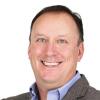MOORHEAD, Minn. — Never is a long time, so it wouldn't be wise to say Republicans will never win a statewide race again in Minnesota.
But it's safe to say it'll be awhile.
ADVERTISEMENT
Minnesota again shunned Republicans in statewide races on Tuesday, Nov. 3, spurning an incumbent president who believed he could flip the state and rejecting a U.S. Senate candidate who super-glued himself to the president's hip.
Better luck next time, whoever are the next iterations of Donald Trump and Jason Lewis.
You're going to need it.
Minnesota's politics is dominated by the Twin Cities area as never before.
There are millions of Republicans in Minnesota. There is a strong base. The GOP actually did better than expected in races for the U.S. House of Representatives, the state House and the state Senate. Where DFLers believed they had chances to expand their power in the state Legislature, Republicans turned them back.
Those races, though, were in slices of Minnesota. Republican Michelle Fischbach, for example, routed longtime Democratic Congressman Collin Peterson in the vast rural 7th Congressional District along the state's western edge.
But in contests that included all of Minnesota's 87 counties, the GOP continued a losing streak that dates to 2006 when Republican Tim Pawlenty won the governor's race by a fraction.
ADVERTISEMENT
It's because Minnesota is a microcosm of the rest of the nation when it comes to the growing electoral divide between the cities and the rural areas.
The population centers in the state are heavily Democratic while the rural areas are almost exclusively Republican. And there are simply more people in the Twin Cities, Rochester, Duluth and Moorhead than there are in Tintah, Ruthton, Dodge Center and Mora.
The divide solidified even more in the last four years and shows no signs of reversing.
It's no different in Minnesota, other than some pockets like the Arrowhead that still tilt blue. That means it's unlikely Minneapolis and St. Paul will soon be voting for Republicans, nor will farm country embrace the DFL.
And because there are so many more people in the Twin Cities and their suburbs, plus the sprinkling of small cities around the state, Republicans are climbing uphill. It's math, not an opinion.
The question is: Could Republicans find a way to appeal more to voters who live in cities?
Minnesota Public Radio home to Minneapolis and several populous suburbs, is to the DFL.
ADVERTISEMENT
"Biden’s record-large margin of 322,000 votes from Hennepin County alone was bigger than the 310,000 votes Trump won in all of the 74 counties he won combined," Montgomery wrote. "Biden’s wins in other counties including Ramsey, Dakota and St. Louis weren’t necessary — they just padded his lead."
Biden won Minnesota's 10 electoral votes based on one county. That's the power of the Twin Cities metro area on the state's politics. Its numbers overwhelm everything else.
And that's why, barring a major upheaval in party politics, it could be awhile before Republicans win a statewide race in Minnesota.
Readers can reach Forum News Service columnist Mike McFeely at mmcfeely@forumcomm.com or (701) 451-5655









